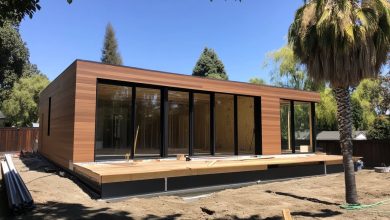
Repointing brickwork is a critical aspect of maintaining the structural integrity and aesthetic appeal of brick buildings. Over time, the mortar between bricks can deteriorate due to exposure to the elements, causing potential issues for the longevity of the structure. Repointing involves the process of removing the old, damaged mortar and replacing it with fresh mortar. This helps to restore the strength of the wall and ensures that the building remains stable and secure.
Why is Repointing Brickwork Necessary?
Brick buildings, especially those constructed with traditional mortar, repointing northern ireland require repointing periodically to maintain their durability. Mortar, the material that binds the bricks together, can deteriorate due to weather conditions, moisture infiltration, or natural wear and tear. As the mortar weakens, the integrity of the wall may become compromised, potentially leading to issues such as water penetration, structural damage, or even the collapse of brickwork.
Repointing brickwork helps to:
- Prevent Water Damage: Over time, rainwater can seep through damaged mortar joints, leading to dampness inside the building. Repointing prevents moisture from penetrating the structure, reducing the risk of mold, decay, and rusting of internal components.
- Preserve Structural Stability: As mortar deteriorates, the bricks can loosen, affecting the stability of the wall. Repointing ensures that the structure remains strong and secure, preventing potential collapse or shifting of the bricks.
- Enhance Aesthetic Appeal: Repointing improves the appearance of the building by making the mortar joints uniform and visually appealing. It restores the building’s original look and can even enhance the overall curb appeal.
- Increase Property Value: A well-maintained brick building with properly repointed walls not only looks more attractive but also increases the property’s value. Repointing can be seen as an investment in preserving the building’s integrity.
Signs That Your Brickwork Needs Repointing
Knowing when to repoint brickwork is essential for maintaining the health of your property. Here are some signs that indicate it might be time for repointing:
- Visible Cracks in the Mortar: If you notice cracks or holes in the mortar, it’s an indication that the material has become brittle and weakened. Cracked mortar no longer serves its purpose of holding the bricks together and needs to be replaced.
- Loose or Missing Mortar: If the mortar between the bricks has crumbled or is missing in places, this can lead to brick instability. Without proper mortar, the structure may begin to degrade.
- Dampness Inside the Walls: Water penetration through the mortar is a major issue. If you notice damp patches or mold inside the building, it could be due to deteriorating mortar allowing moisture to seep in.
- Discoloration of the Mortar: When the mortar starts to degrade, it can change color, often appearing darker or patchy. This discoloration is often a sign that the mortar is absorbing water, leading to its breakdown.
- Brick Shifting or Cracking: If the mortar is no longer holding the bricks securely, the bricks themselves may begin to shift or crack. This can lead to more significant structural issues if left unaddressed.
How is Repointing Brickwork Done?
Repointing brickwork is a meticulous process that requires skill and attention to detail. Here is a step-by-step guide to how repointing is typically carried out:
Step 1: Inspect the Brickwork
Before beginning any work, it’s essential to thoroughly inspect the brickwork to identify areas that need repointing. A professional mason or bricklayer will assess the condition of the mortar and determine how much of the existing mortar needs to be removed and replaced.
Step 2: Remove the Old Mortar
The next step is to remove the damaged mortar from the joints between the bricks. This is done using hand tools or power tools, such as a hammer and chisel or an angle grinder. The goal is to remove the old mortar without damaging the surrounding bricks.
Step 3: Clean the Joints
After the old mortar has been removed, the joints need to be cleaned to ensure that the new mortar adheres properly. Any dust, debris, or loose particles are removed to create a clean surface for the new mortar to bond with.
Step 4: Prepare the New Mortar
A new batch of mortar is then mixed to match the original mortar’s color and composition. The mortar mix typically consists of sand, lime, and cement. The proportions depend on the type of building and the materials used in the original construction.
Step 5: Apply the New Mortar
Once the mortar is prepared, it is carefully applied into the joints using a pointing trowel. The mason works to fill the joints evenly, ensuring that the new mortar is compacted and properly shaped to match the original brickwork’s aesthetic.
Step 6: Tool the Joints
After the mortar has been applied, it’s essential to “tool” the joints. This involves smoothing the surface of the mortar and shaping it to give it a neat, uniform appearance. The mason may use a pointing iron or other tools to achieve the desired finish.
Step 7: Cure the Mortar
The repointed brickwork is left to cure for a period of time to ensure that the mortar hardens and bonds effectively with the bricks. Curing time may vary depending on the type of mortar used, but it generally takes at least 24-48 hours for the mortar to fully set.
Step 8: Clean the Surface
Once the mortar has set, any excess mortar on the surface of the bricks is cleaned off. This step ensures that the finished product looks tidy and that the mortar does not stain the bricks.
Types of Repointing Techniques
There are several different techniques used in repointing, depending on the style of the building and the type of mortar joints:
- Flush Pointing: The mortar is applied to the joint and finished flush with the brick surface, creating a smooth, even look.
- Tuck Pointing: This technique involves creating a thin mortar joint that is then recessed slightly, giving the brickwork a neat, crisp appearance.
- Weather Struck Pointing: The mortar is applied at an angle to help shed water away from the joint, offering additional protection against moisture penetration.
- V-Joint Pointing: The mortar is shaped into a “V” form, creating a decorative finish while providing the same benefits of moisture resistance as other techniques.
Benefits of Repointing Brickwork
Repointing provides numerous benefits, both functional and aesthetic:
- Enhanced Durability: By replacing old, deteriorating mortar, repointing ensures that the structure remains strong and resistant to the elements.
- Improved Insulation: Properly repointed brickwork helps to maintain a building’s insulation by preventing cold air and moisture from entering through the gaps in the mortar.
- Prevention of Structural Damage: Repointing prevents bricks from becoming loose or shifting, which can otherwise lead to more significant structural problems over time.
- Aesthetic Improvement: Freshly repointed brickwork enhances the overall look of the building, giving it a cleaner, more polished appearance.
Conclusion
Repointing brickwork is an essential maintenance task for anyone with a brick building. It not only improves the visual appeal of the property but also prevents serious structural damage caused by weathering and moisture infiltration. If you notice signs of deterioration in your brickwork, it’s important to address the issue promptly with professional repointing services. This simple yet vital process can save you from costly repairs down the road and ensure that your building remains sturdy and aesthetically pleasing for many years to come.









